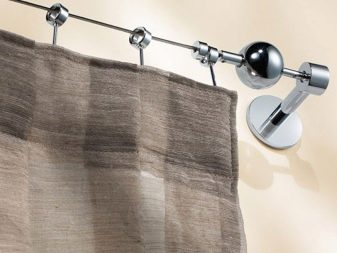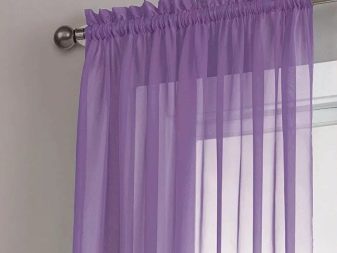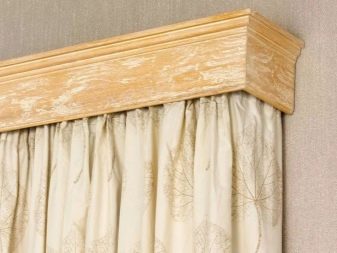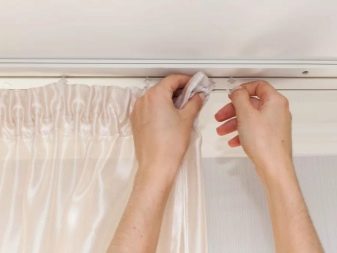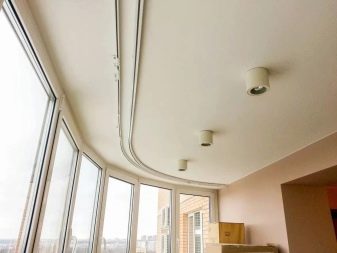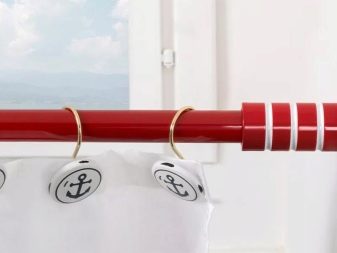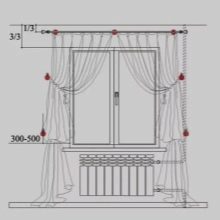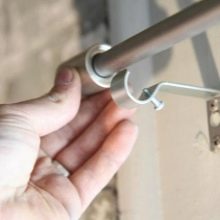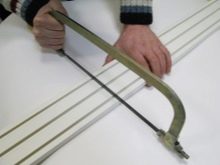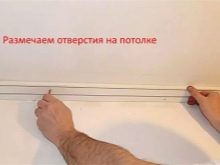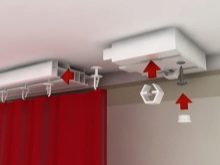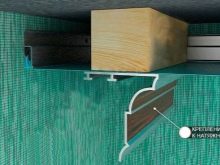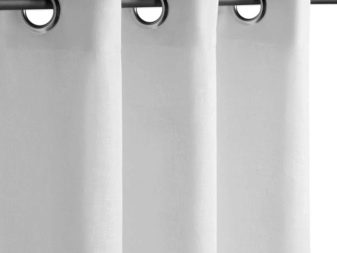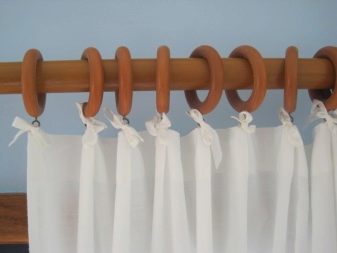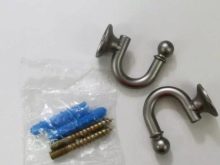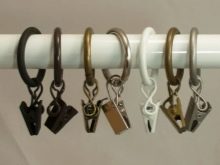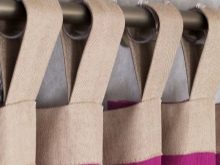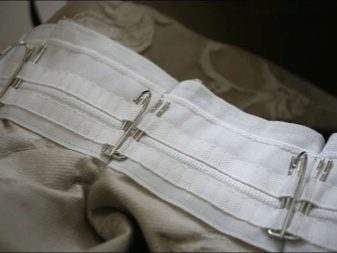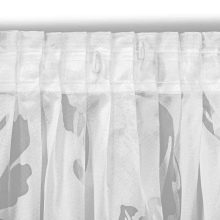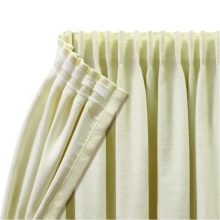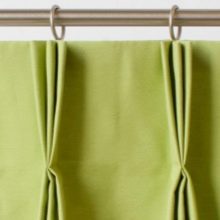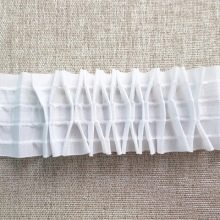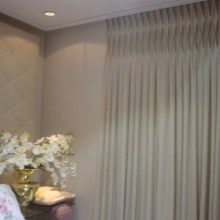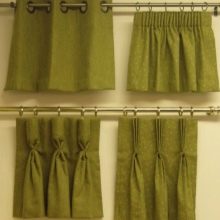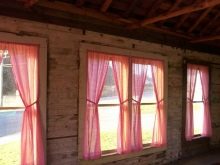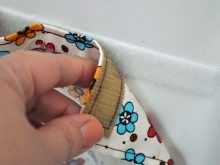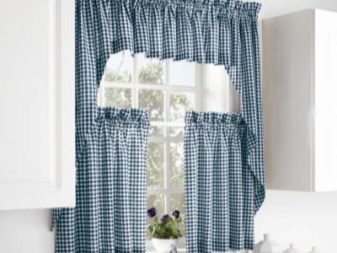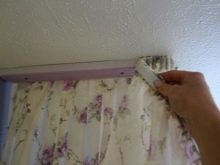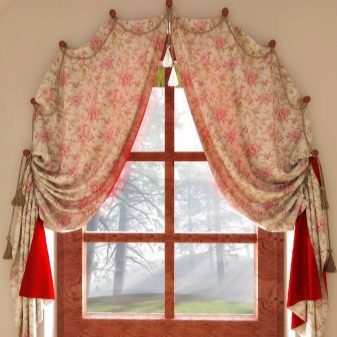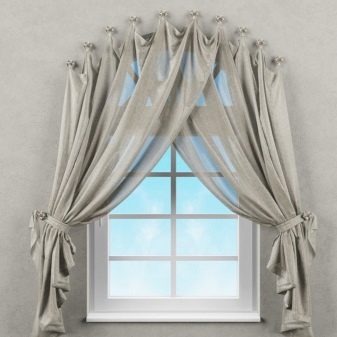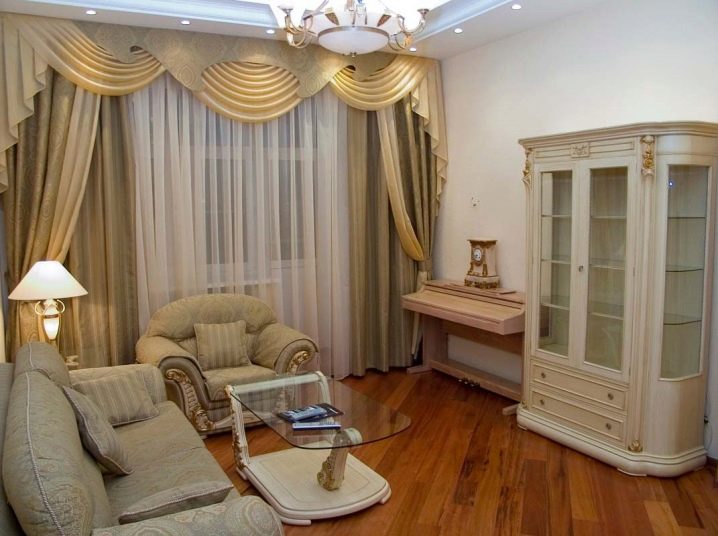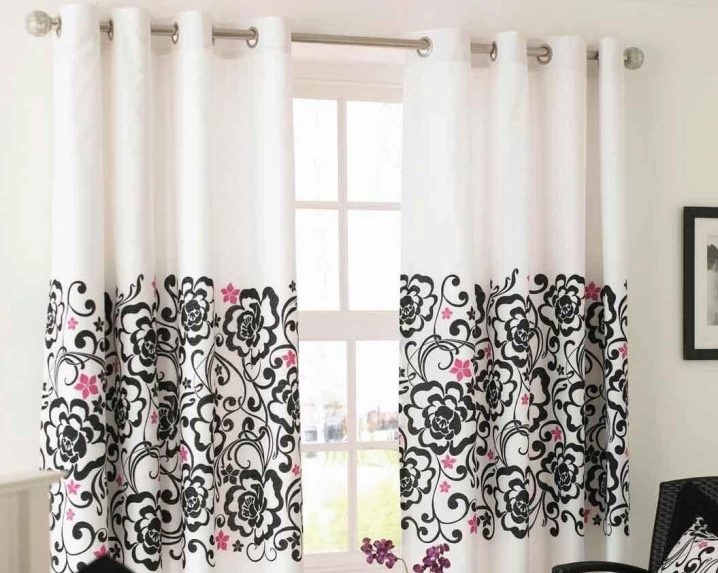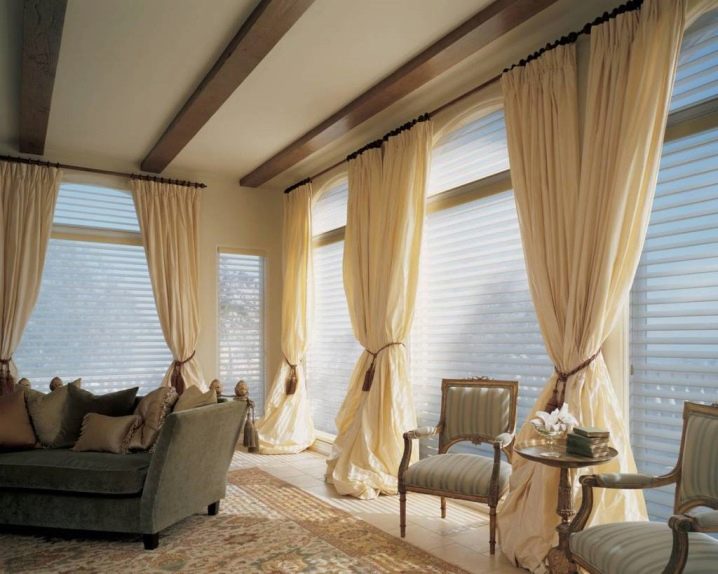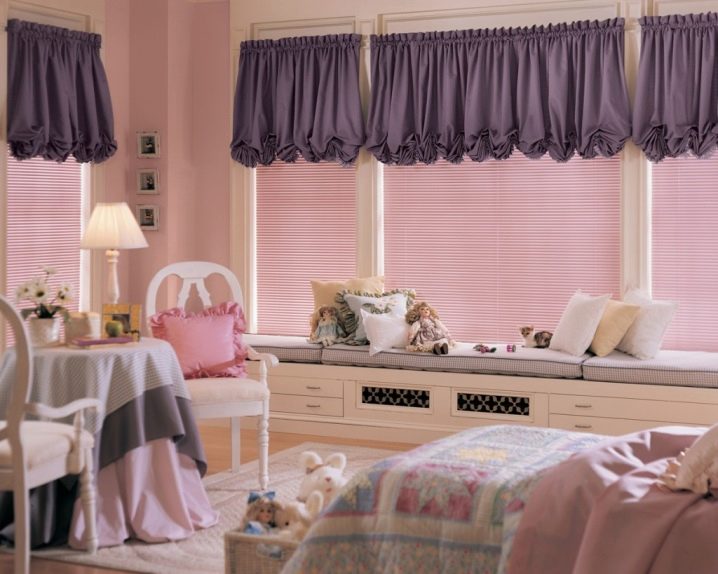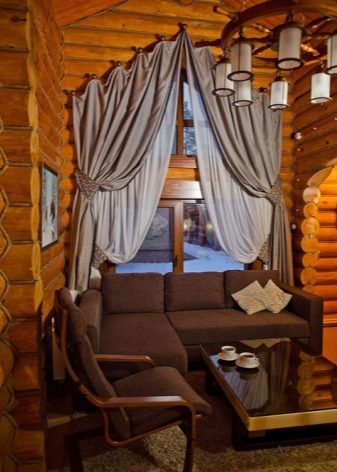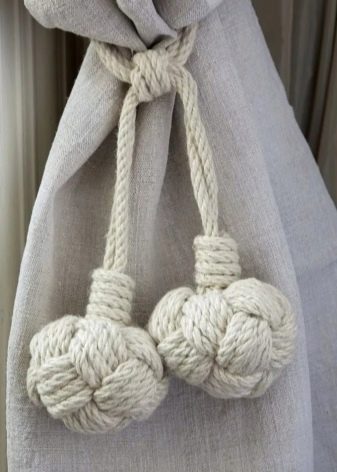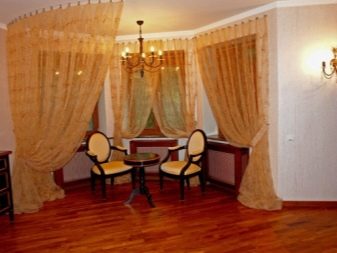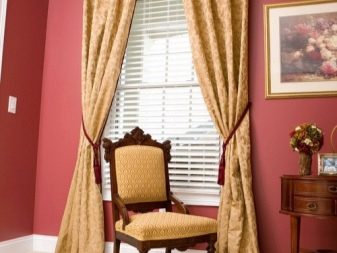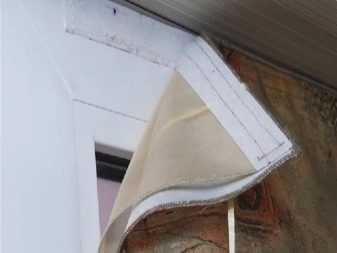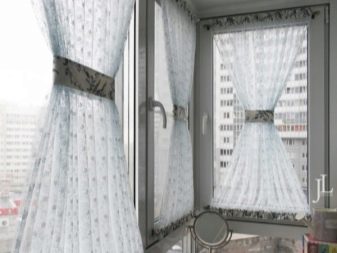How to hang the curtains?
The curtains form the interior no less than the furniture and decoration of the walls, floor or ceiling. They allow you to visually expand or reduce the room and reveal its character, emphasize the style direction. For example, a bright fabric will diversify the simplest design, products of calm tones will help to create a complete composition. But just finding the right curtains is not enough. Fabrics differ in weight and density, to beautifully place them, you need to find a suitable eaves, fixtures and accessories.
Selection and installation of the eaves
Mostly curtains hang on the eaves. They come in different shapes and thicknesses, are available in various materials. Both traditional and modern versions of this design are popular now.
It is worth considering the most popular solutions.
- Barbell - This is a classic cornice, which is attached to the walls with brackets. Often it has several guides, which allows you to hang two or three kinds of curtains at the same time. The blades are attached to the rings, which slide freely, without touching each other. At the ends are fleron. Models are made of plastic, wood and metal.
- String - It is a thin metal cornice that attaches to the ceiling or walls. It consists of one or several rows and is only suitable for light fabrics, since heavy ones will cause sagging over time.
- Baguette Cornices - This is not only a design, but also part of the decor, so they must match the interior style. They consist of a rod or string for curtains and a decorative strip that hides the fastenings of the canvas. Especially beautiful baguette cornices look in combination with lambrequins and curtains with brightly decorated upper part. For their manufacture use different materials, but more often - it is plastic and wood. They create the illusion of high ceilings, suitable for framing windows of complex shape.
- Profile construction - this is a guide, in which there is a groove for the runners.Constructions of this type are made of plastic or aluminum. They are single-row and multi-row (up to 4 rows). Today, straight and curved structures are produced. They are relatively light, so they are attached not only to the walls, but also to stretch, plasterboard and wooden ceilings.
- Flexible cornice - it is a tape profile made of plastic, polyurethane or aluminum, which can be given any, even a complex bend. They are single-row and multi-row, withstand heavy fabrics. In addition to tape, on sale, you can find curtain rods with a semicircular or arcuate profile, because such solutions are convenient to use for arched and roof windows. They are attached to the walls and ceilings, except for hanging.
- Telescopic structures can change the length. They differ in the type of fastening - spacers and brackets. The first help out, where it is undesirable to drill the surface: in the bathroom, doorways, niches. They are suitable for light curtains. Eaves on the brackets can be mounted on the walls and ceiling. Among them are two-row, which will withstand a significant load.
If you want the curtain to cover only the window, the eaves fitthe length of which only slightly exceeds the width of the opening. But if the fabric is quite dense, it will be difficult to push it apart so as to free the window. When you want to curtain the whole wall, you should choose a cornice not of the same length, but a little shorter. Between its edge and the side wall it should remain 5–7 cm. It is worth considering that for a structure longer than 2 meters you will need a third bracket.
Installation of a cornice begins with marking the wall or ceiling, which will allow you to accurately determine the location for the brackets. It is necessary to determine the middle of the wall and measure the same distance on both sides of it. If the ceiling line is uneven, has noticeable drops, you should focus on it, and not on the level and window frame, otherwise it will seem that the structure is hanging at an angle.
To determine at what height to install the eaves, one should proceed from the peculiarities of the room: its size, role, and impression it should produce.
It is advisable not only to have the structure under the ceiling, but to retreat down 5–10 centimeters. The height of the edge of the curtains from the floor can also be any. At the marked points make holes.To do this, you will need a drill and drills with lugs from the win — they can handle both bricks and concrete. Dowels are hammered into them, then the brackets are fixed with screws. On the cornice, they put on fasteners for fabric, after which it is mounted on brackets with bolts or self-tapping screws.
The process of installing the structure on the ceiling is distinguished by such details as:
- when marking the ceiling, it is necessary to ensure that the attachment points are equally distant from the wall;
- If a battery is installed, the eaves should not be attached close to the wall.
Installing the eaves with stretch ceilings is different. A wooden bar is nailed between the concrete ceiling and the film. Its length is equal to the length of the eaves, and the thickness is slightly less than the distance between the planes of the ceilings. Then the film is returned to the place and mark the points of fastening of the cornice on it. They put the rings and perform burning, and then attach the base for the curtains. The beam is useful in the case when you need to hang a powerful curtain rail for the curtains on the ceiling of plasterboard. If the total weight of the eaves and curtains is less than 5 kg, you can do without additional fortifications.
Still, it is better to install lightweight plastic structures with thin curtains on drywall.
Types of Mounts
Choosing fabric for curtains, you should immediately think about how they will be attached to the rail. There are several basic types of fasteners. Some are more suitable for heavy fabrics, others for organza and tulle. Some of them have to be hidden, and some, on the contrary, adorn the curtains. Properly chosen fasteners move easily along the eaves and do not spoil the fabric.
There are several possible mounting options for canvases:
- Rings - it is fastenings for eaves of round section. They are sewn to the upper edge of the curtains or used with a curtain tape or hooks. They withstand a lot of weight and create beautiful vertical draperies, so they are often used for curtains. Before washing, they must be removed.
- Grommets - These are rings that pierce the holes in the upper part of the canvas. Through them the eaves are passed. They are suitable for any dense fabric, allow you to create a uniform vertical folds. They are hung on the eaves of circular cross section. It is desirable that they are combined with him in color and material.
- Hooks - these are convenient and inconspicuous details. The lower part is attached to the curtains for the loop, and the top - to the guide, sometimes to the rings.They are good for any fabric, except for very heavy.
- Clamps allow you to change the length of the canvas. They can be used separately or combined with rings and hooks. They allow you to form beautiful folds, but can leave puffs, and thin matter - to break.
- Fabric hinges - this is both functional and decorative fixtures. They can be made of the same material or contrasting in color and texture of the webbing. They are completely sewn to the canvas, fastened with a clasp or tied with a bow. Loops from fabric will very much revive the interior of the nursery, bedroom or kitchen, and in the living room will look frivolous. Hinged curtains are quite difficult to push in and position symmetrically.
Attaching rings and hooks will be more convenient if you use a curtain tape - this is a band of nylon or cotton, through which the laces are threaded.
Curtain tapes form loops and allow to drape fabric in different ways. Products can be narrow (2–4 cm) and wide (up to 17 cm), with a different number of looped rows. For simple folds, one or two rows is enough, and to get flounces and falling folds, you need a multi-row braid.Curtain tapes differ in the method of attachment to the canvas. In addition to sewn, there are various self-adhesive and thermoglue options. Tapes are attached to the back of the curtains. The farther the webbing is located from the edge of the canvas, the more airy and light assembly will be.
Using the tape, you can get the folds of different shapes and complexity, namely:
- posts - these are the same vertical folds; their depth and quantity can be varied by the tension of the laces;
- the pencils - These are repetitive vertical elements that taper upward, forming an additional fold; they do not require a large consumption of material, and in combination with a single-color fabric they will successfully complement the classic interior;
- fan - These are elegant folds of 3-5 parts, resembling a famous accessory;
- butterfly - This is a diamond-like screed; For its formation need a ribbon with 4 laces;
- puffs - These are large uneven folds created by a wide ribbon with four rows of bands; Especially spectacular are puffs made of dense knitted fabrics and fabrics with Lurex, they paint the bedroom, kitchen or nursery;
- bow - This is a series of bows, located close to each other; Most appropriately they will look in the bedroom because they give the room a playful, romantic character.
Original ways
It is worth considering how to curtain the window if it is not possible to install the eaves.
There are such three ways to beautifully place curtains and without this design, like:
- on the line;
- on flypapers;
- on hooks.
The first method is a simplified version of the string cornice. It is more suitable for weightless fabrics - organza, tulle. It is often resorted to when they want to decorate the balcony with curtains. To hang the curtains on the fishing line, you will need a minimum set of tools: tape measure, nails, hammer. On the edges of the opening hammer nails. A curtain is put on the fishing line: you can make holes in it, fasten with clamps or make a drawstring - bend the upper edge along the entire length and sew it. The line is tied to the nails, while it must be well stretched.
Velcro curtains are located almost close to the window. Thanks to this, the opaque fabric darkens the room well even during the day.
The soft part of the velcro is attached to the curtain, and the hard part can be attached with the following options:
- to the wall - using dowels and screws;
- to wooden barwhich is screwed to the wall; sticky tape glued with wood glue or nailed with a stapler;
- to window frame - Stapler or carnations will be useful; the width of the curtain should correspond to the width of the window casement.
The third variant of fasteners differs from the previous ones in that it will withstand dense heavy material. Decorative coat hooks are fixed at equal distance along the opening. Then rings are sewn to the curtains and hung on hooks. If you do the work carefully, you get a very unusual window decoration. By the way, this method can be used for arched and beveled openings.
Examples in the interior
- The classic-style living room is decorated with a composition of Roman curtains, tulle and curtains. A fabric of soothing shades is used, without a pronounced pattern, which allows you to focus on the draperies. The supporting structure is completely hidden.
- Metal eaves rod does not spoil the minimalist interior. Thick curtains on the grommet form large vertical folds.
- Here, cornices play the role of additional accents. Their color coincides with the color of the dark decorative panels on the ceiling, which helps to emphasize the transition from walls to ceiling. Rings are matched to the same shade as the bar.
- Weightless curtains contrast with a massive baguette cornice. By the way, it does not have to be decorated with stucco. Neat assembly at the top of the curtains are made of tape.
- Puff folds add sophistication to the bedroom decor. They can be formed using a curtain tape.
- One of the options for the design of an oblique window is a flexible cornice. From it you can form a sharp angle, repeating the outlines of the window opening.
- In this interior the eaves would look unnatural. And linen curtains on hooks retain the impression of man-made. Thus you can make an opening of any shape. The only pity is that you can not completely push the fabric - you need to use podhvaty.
- Curtains on hooks will decorate not only the house in ethnic style, but also the classic living room. Decorative fixtures will be a small interesting detail.
- A simple way to decorate a balcony is to use a velcro curtain. It can be attached directly to the plastic window without installing the eaves.
- If you cannot find a suitable construction in any way - it doesn't matter, because there is a natural material. Strengthened branches on the brackets along with live and artificial flowers make the room a corner of the garden.Curtains are hinged in fabric, reminiscent of the simplicity and comfort of a country house.
To learn how to hang curtains on a curtain tape, see the following video.


